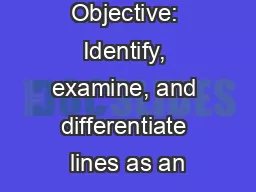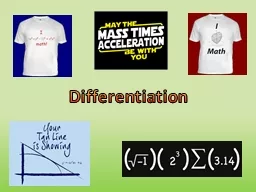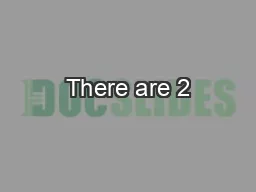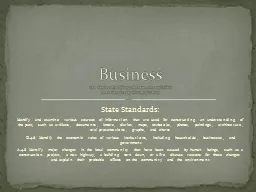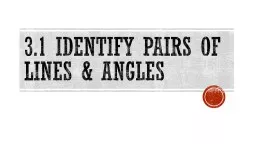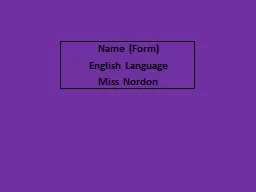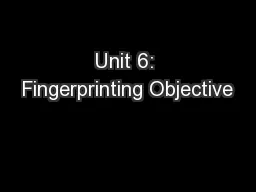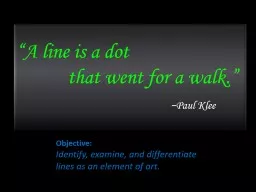PPT-Objective: Identify, examine, and differentiate lines as an
Author : tawny-fly | Published Date : 2017-07-07
Warmup Quote A line is a dot that went for a walk Paul Klee Create a sketch that illustrates the quote Elements of Art Line Joseph Stella The Voice of the City
Presentation Embed Code
Download Presentation
Download Presentation The PPT/PDF document "Objective: Identify, examine, and differ..." is the property of its rightful owner. Permission is granted to download and print the materials on this website for personal, non-commercial use only, and to display it on your personal computer provided you do not modify the materials and that you retain all copyright notices contained in the materials. By downloading content from our website, you accept the terms of this agreement.
Objective: Identify, examine, and differentiate lines as an: Transcript
Download Rules Of Document
"Objective: Identify, examine, and differentiate lines as an"The content belongs to its owner. You may download and print it for personal use, without modification, and keep all copyright notices. By downloading, you agree to these terms.
Related Documents

